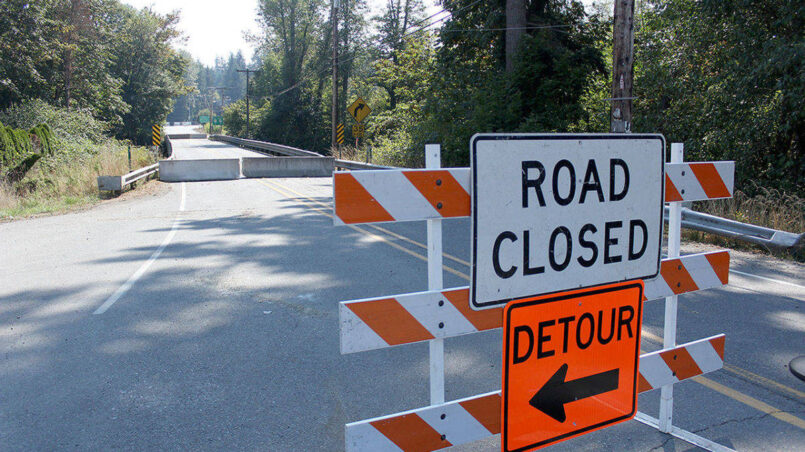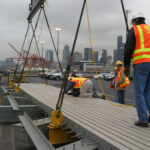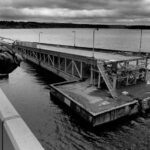It should come as no surprise that our infrastructure is showing its age. In Washington State alone, the average age of a bridge is 48 years and nearly 10% of those are over 80 years old. And while it is certainly true that there are definitely some bridges over 80 years old that don’t look a day over 30, a bridge’s age – in general – correlates pretty closely with its condition.
If none of the 3000+ bridges in the Washington State inventory were to be replaced over the next 27 years, the average age of the State’s bridges would be 75 years. And 75 years is the current design life for bridges by the current bridge design specifications. Now, not all bridges need to be replaced at that arbitrary number of years but we typically expect bridges to last about that long with current construction practices, tolerances and materials. Anything beyond that is gravy or borrowed time, depending on how you see the glass.
It is unlikely that no new bridges will be added to the inventory in the next 27 years and it is equally unlikely that none of those older or more decrepit bridges will be replaced in the next 27 years. That said, with more than 70% of the State’s bridges being over the age of 40 and the current trend toward rehabilitation rather than replacement, we may slow the effects of time but we will not stop them.
And that’s just one way of looking at the infrastructure problem.
While many different groups have provided many different estimates, the American Road and Transportation Builders Association estimates that 230,000 bridges need replacement or major rehabilitation – at an estimated cost of $164 billion. And the fact is that we just don’t have the funds to do all of these projects right now. And even if you begin to implement a program to address all of those needs, it would take us years to address them all.
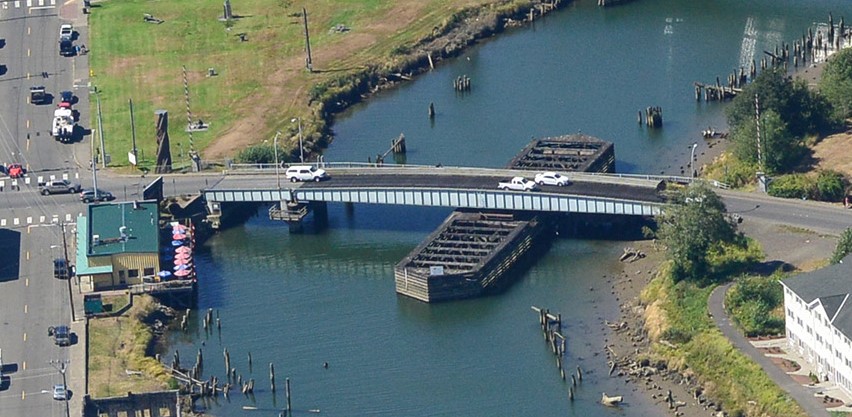
When you begin implementing a large scale program as described above, obviously you have to prioritize your resources. The most urgent needs are tended to first, with less urgent needs left until later. But needs change. Not all bridges deteriorate at the same rate, and as a result those priorities will continually change.
So what goes into this prioritization? Average Daily Traffic? Is it a major freight corridor or a secondary highway? What is the effect if that bridge were to close? How valuable is the asset? These are just some of the engineering questions that have to be asked. Then there are the political questions, which we won’t get in to here.
Many transportation agencies have come up with ways to make transportation dollars go further. The thought is that with so many projects all competing for the same limited funds, what can we scale back in order to trim cost? In effect, what features are in reality a nice to have rather than a must have? This is known as practical design. It’s just a fancy name for something engineers were already doing, which is to find the best solutions to difficult problems.
One of the best examples of practical design is shoulder and lane widths. Because bridge or roadway cost is linked to square footage, reducing the plan area will reduce cost. The standard lane width in a perfect world is 12 feet. Many agencies have scaled this back to 11 feet. Bare minimum shoulder widths of 2 feet are more common now and where 8 foot shoulders were common, 5 feet or less is now typical. In some cases where multiple modes are to be included in a corridor, true shoulders are now being striped as bike lanes.
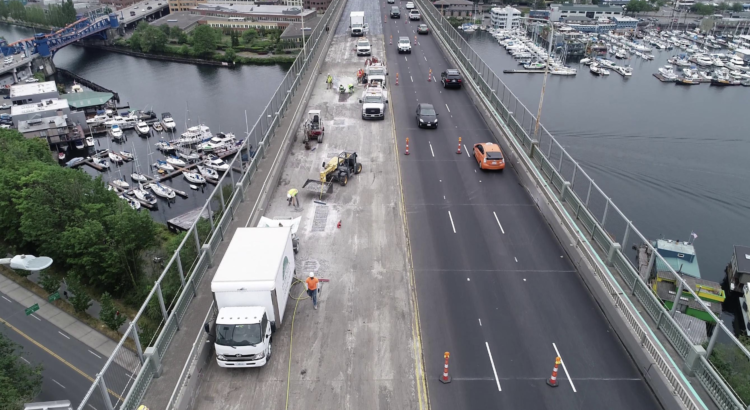
But even with practical design, many agencies are being asked to do more with less. Where a bridge needs replacement, rehabilitations are being studied. But does rehabilitation really address the underlying issues? Does it give you the best bang for your buck? Structural issues may be dealt with but rehabilitations often can’t address substandard lane widths, shoulder widths or inadequate stopping sight distances. Spending 50% of the cost of replacement on rehabilitation only to gain 30 more years of service won’t get you to 75 years.
We are going to have some hard choices to make in the near future. Take the Spiketon Creek Bridge near Buckley, WA. Built in 1936, the bridge is a unique cast-in-place reinforced concrete box girder which spans over a ravine. Running the length of the ravine is a raised pedestrian boardwalk. Where this path passed beneath the bridge, a roof structure had been constructed – ostensibly to protect passers-by from the concrete chunks that regularly fall off of the bridge above.
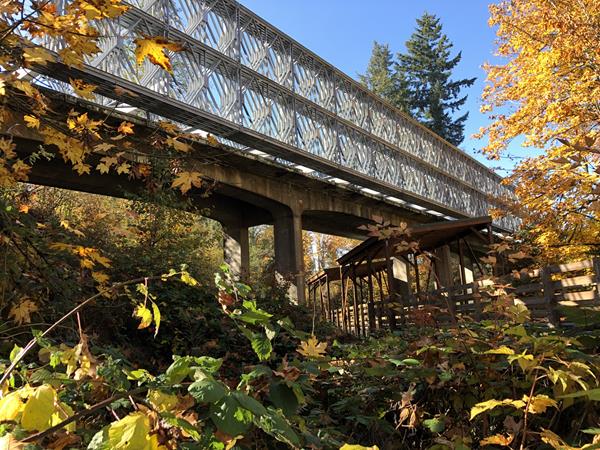
The bridge had a number of different issues. When it rained, water was known to pond on the deck. Long ago paved over with asphalt, the bridge had lately developed a series of nasty potholes in one lane. These crater sized potholes were causing cars to straddle them to avoid driving right over them. This was a tricky business as the lanes were only 10 feet wide, so to straddle the potholes you had to drive over into on-coming traffic.
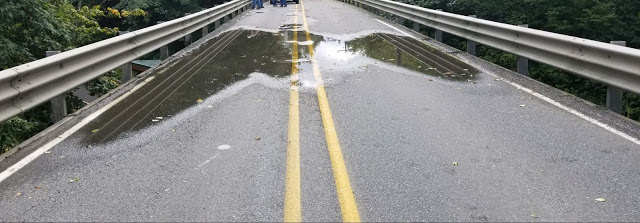
A maintenance project had been planned to remove the asphalt, repair the underlying cause of the potholes in the concrete deck and then re-pave the bridge. All of this work, to be done during a 6 week shutdown, was being done to a bridge that was over 80 years old and had already been identified for replacement. Funding was tight and there was no way the project could be accelerated.
Before this work could begin, enough settlement in the center pier was noticed to cause concern. The bridge was permanently closed to traffic in August of 2018. So what do you do now? Ask some really tough questions.
The state route in question is a secondary highway which runs parallel to a primary state highway. In fact, with the bridge closed, the detour was only 1.5 miles. This left four options for a path forward. Leave it closed and live with the detour. Repair the bridge and re-open it. Accelerate the replacement. Or use a temporary bridge over top the existing bridge.
The first option, to leave the bridge closed, was not popular with the local population. This is another fact about transportation – it often becomes political. And closing bridges is contrary to the very purpose of a transportation agency, which is to ensure that people and good move safely and efficiently.
The second option, to repair the bridge, while possible, was not seen as the best solution. Spending a large amount of precious transportation dollars to shore up an 80 year old bridge which will eventually be replaced was not seen as a good investment.
The third option, to accelerate the replacement, was considered but ultimately ruled out for a variety of reasons. This would have required a rushed design schedule to open the roadway as soon as possible and there were a number of other structures that would have been impacted by the project.
This left the fourth option, to use an Acrow bridge to span over top of the existing bridge and restore the highway. The total cost was $3.2 Million for the temporary bridge, about 75% of the cost of a new permanent bridge. However, the Acrow can be stored and used again in future which means the $2 million dollar cost of the bridge will likely be a good investment. It should be noted that at the time, this particular Acrow bridge was the longest single span Acrow ever constructed at 240 feet. Look for more on Acrow bridges in a future article.
In hindsight, would you make the same call? Tough decisions lie ahead in the world of transportation. A secondary route bridge or a modular joint replacement on a major interstate? Both have impacts to our daily lives, but there just aren’t enough resources to do both. As our infrastructure continues to age, expect more of these situations to come up. Someday soon a bridge may be closing on a road near you…
Views: 852